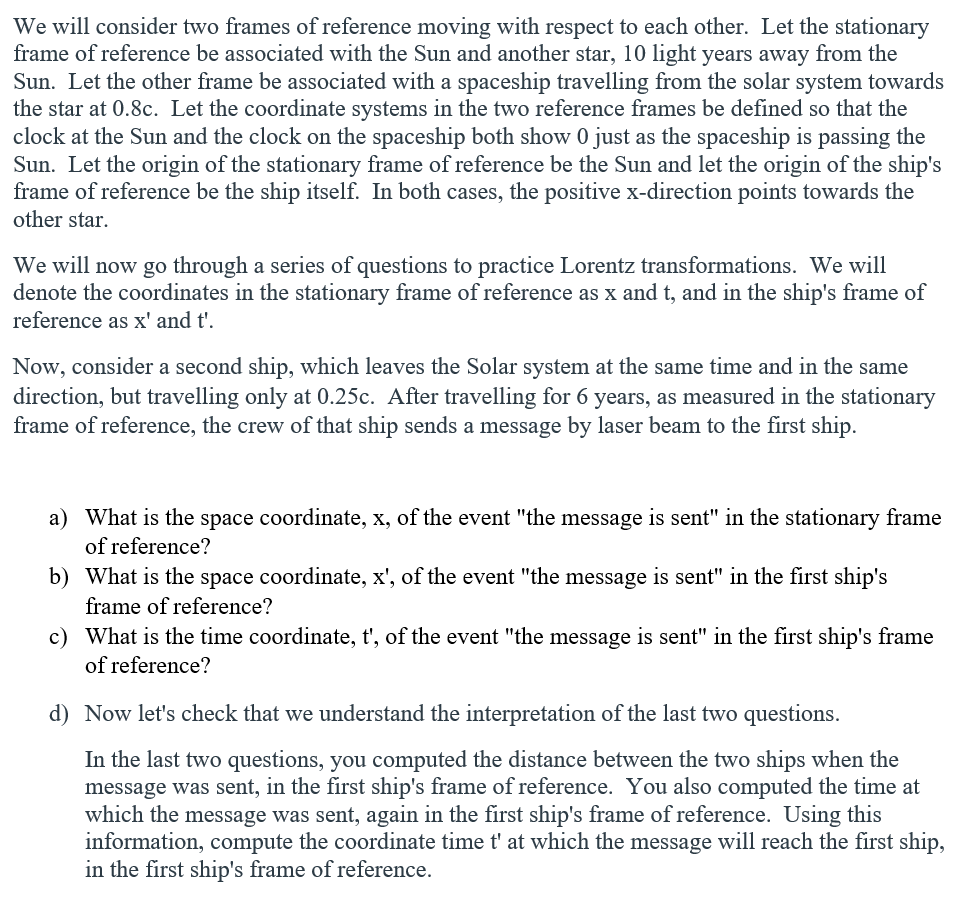Answered step by step
Verified Expert Solution
Question
1 Approved Answer
We will consider two frames of reference moving with respect to each other. Let the stationary frame of reference be associated with the Sun

We will consider two frames of reference moving with respect to each other. Let the stationary frame of reference be associated with the Sun and another star, 10 light years away from the Sun. Let the other frame be associated with a spaceship travelling from the solar system towards the star at 0.8c. Let the coordinate systems in the two reference frames be defined so that the clock at the Sun and the clock on the spaceship both show 0 just as the spaceship is passing the Sun. Let the origin of the stationary frame of reference be the Sun and let the origin of the ship's frame of reference be the ship itself. In both cases, the positive x-direction points towards the other star. We will now go through a series of questions to practice Lorentz transformations. We will denote the coordinates in the stationary frame of reference as x and t, and in the ship's frame of reference as x' and t'. Now, consider a second ship, which leaves the Solar system at the same time and in the same direction, but travelling only at 0.25c. After travelling for 6 years, as measured in the stationary frame of reference, the crew of that ship sends a message by laser beam to the first ship. a) What is the space coordinate, x, of the event "the message is sent" in the stationary frame of reference? b) What is the space coordinate, x', of the event "the message is sent" in the first ship's frame of reference? c) What is the time coordinate, t', of the event "the message is sent" in the first ship's frame of reference? d) Now let's check that we understand the interpretation of the last two questions. In the last two questions, you computed the distance between the two ships when the message was sent, in the first ship's frame of reference. You also computed the time at which the message was sent, again in the first ship's frame of reference. Using this information, compute the coordinate time t' at which the message will reach the first ship, in the first ship's frame of reference.
Step by Step Solution
★★★★★
3.49 Rating (156 Votes )
There are 3 Steps involved in it
Step: 1

Get Instant Access to Expert-Tailored Solutions
See step-by-step solutions with expert insights and AI powered tools for academic success
Step: 2

Step: 3

Ace Your Homework with AI
Get the answers you need in no time with our AI-driven, step-by-step assistance
Get Started


